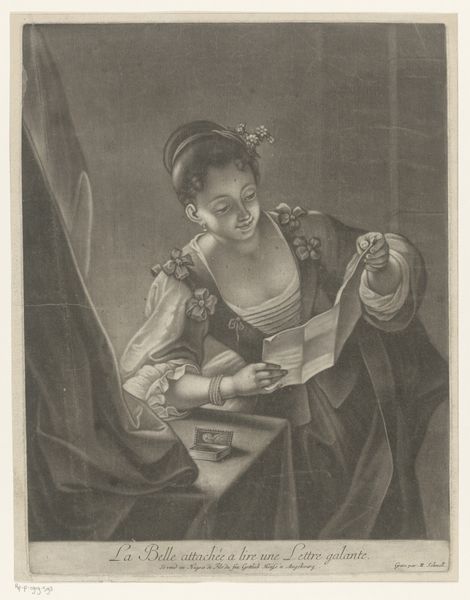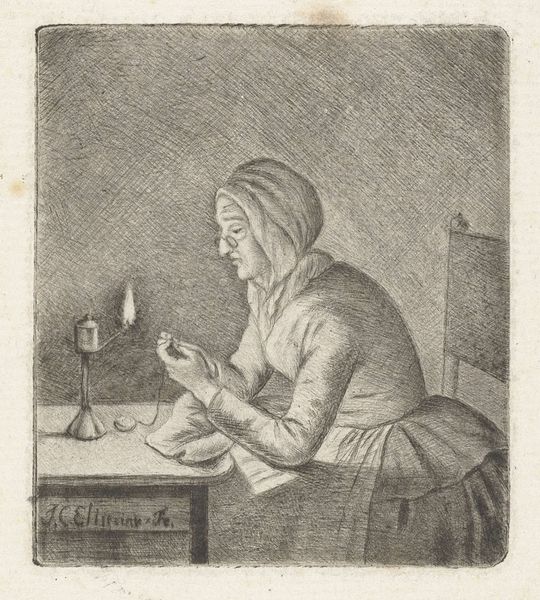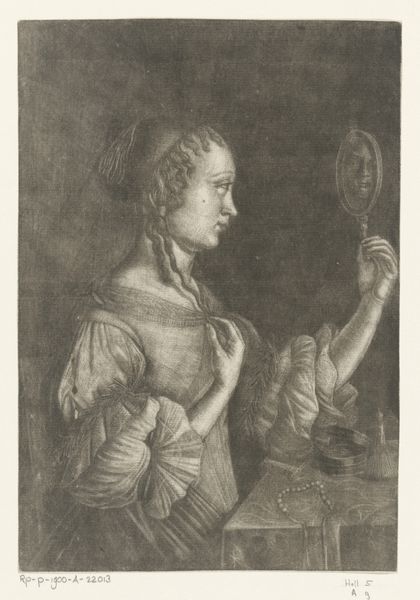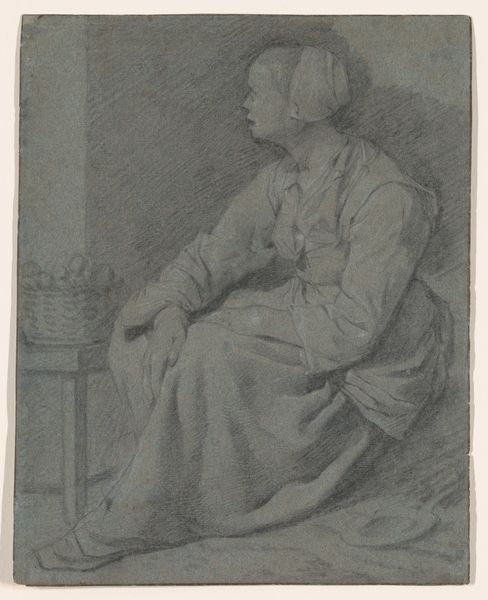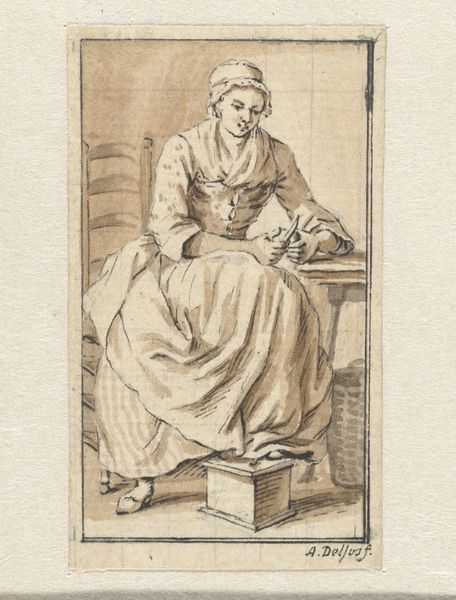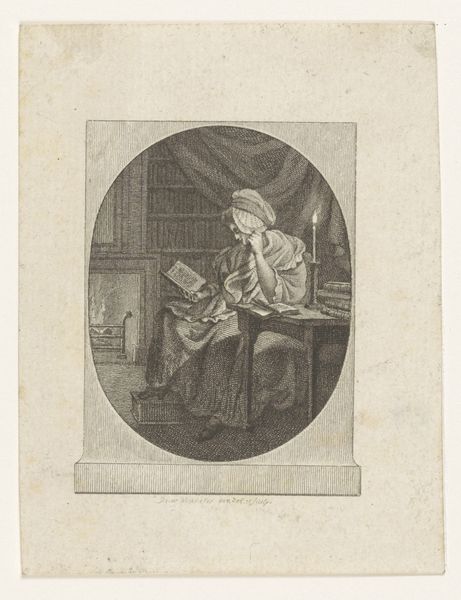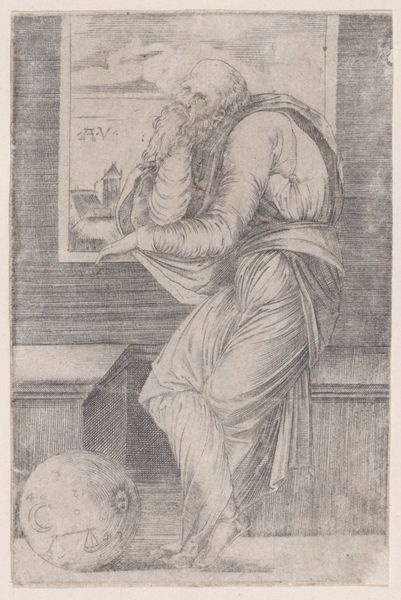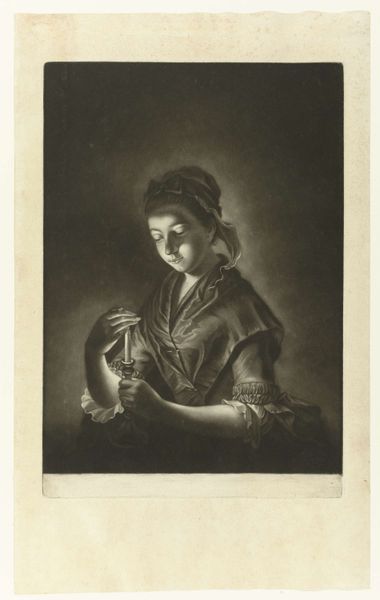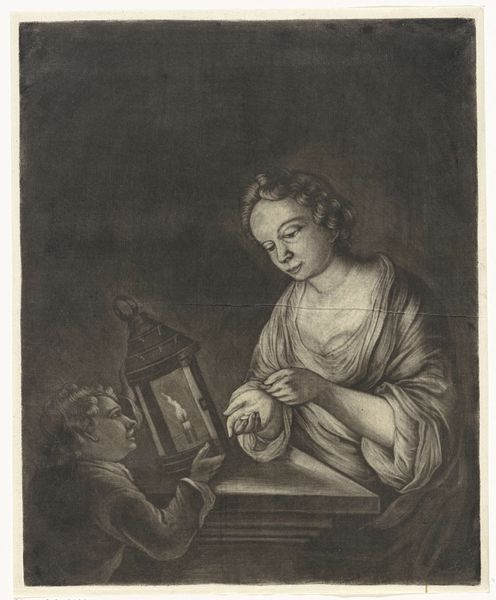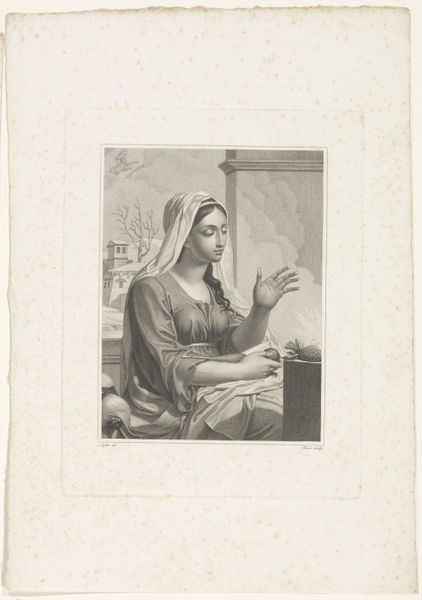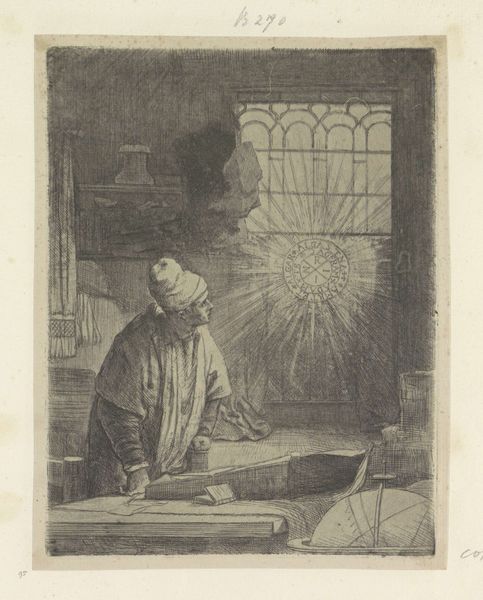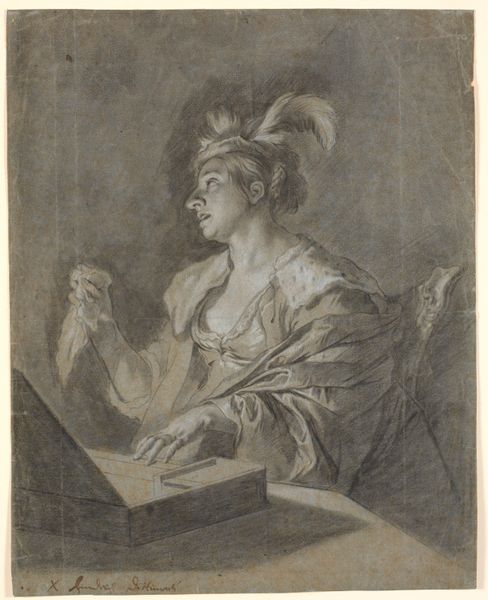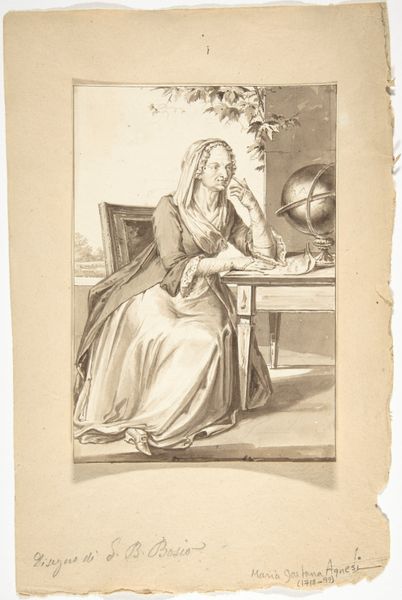
drawing, print, etching, engraving
#
portrait
#
drawing
#
baroque
# print
#
etching
#
pencil sketch
#
charcoal drawing
#
genre-painting
#
engraving
Dimensions: Sheet (Trimmed): 10 7/8 × 7 11/16 in. (27.6 × 19.6 cm)
Copyright: Public Domain
Editor: So, here we have "The Castle of Cards" from sometime between 1739 and 1749 by Pierre Alexandre Aveline. It’s an engraving, so a print, and shows a young man carefully building a house of cards. It looks incredibly fragile and focused. What do you see in it? Curator: I see a representation of labor and fragility, but I'm particularly interested in the means of its production. As a print, the image itself is a commodity. What social class would have had access to it and what does it reveal about consumption? Editor: That's interesting! I was mainly focused on the symbolism of the card castle, representing fleeting ambition. Curator: True, but let’s consider Aveline's choices in making this image available as a print. Think about the engraver's skill, translating visual information to a reproducible form. Each line etched contributes to the image's value. What kind of labor is valued and devalued in this process? Editor: So, you're saying it's not just about the finished artwork but the process and its economic implications? Does the widespread production change art status? Curator: Precisely. Consider how the mass production and consumption of these images might have disrupted older systems of patronage. The art becomes more widely distributed, reaching diverse audiences. How might this democratizing aspect alter perceptions of art and its role in society? Editor: I hadn’t considered that it could change how society views art because its consumption would be much more accessible, not just exclusive to the upper class. Curator: And think about the waste generated in the process – the discarded engravings, the worn-out plates. These are material remnants of production. Looking at art through a materialist lens, what new perspectives emerge? Editor: Definitely something to think about. Thanks! This opens up so much about looking beyond the subject and digging into its existence as an object. Curator: Indeed. And seeing the artist’s intention and artwork itself within a broader framework of labor, production, and social consumption.
Comments
No comments
Be the first to comment and join the conversation on the ultimate creative platform.
